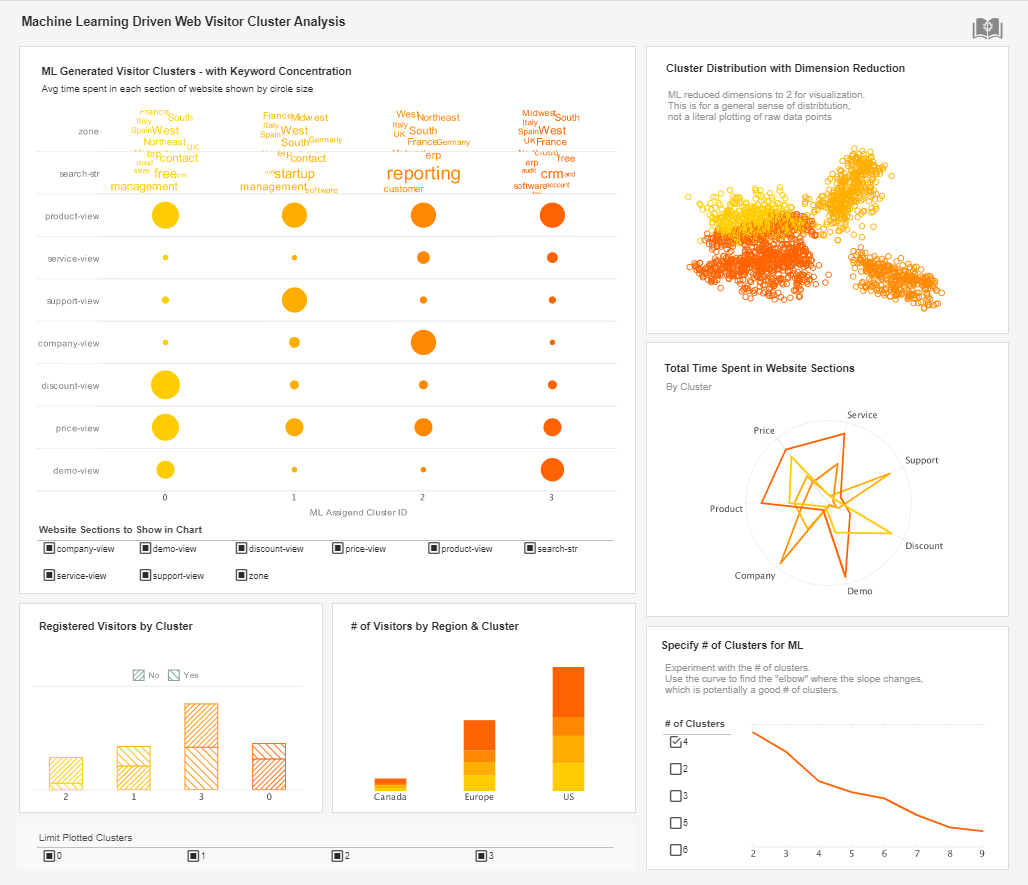InetSoft Webinar: The Path to Business Agility Success
This is the continuation of the transcript of a Webinar hosted by InetSoft on the topic of "Improving Business Agility Using Performance Management Software." The speaker is Mark Flaherty, CMO at InetSoft.
This is the path to business agility success. You still have to plan. I’m sorry there’s no automated planning technology out there that I think can really do it. You have to plan out where you are now and where you want to get to. The automation processing a lot of times is being able to go out and discover what is being consumed in your company now, how it’s being consumed, how it’s communicated, and how it’s going to be managed.
What systems should be automated to provide you with time and money to concentrate on new capabilities. Again, don’t forget, you have got key issues about security, privacy, and compliance that have to be addressed. Those are the three obstacles to any new implementation and before you start automating, even things like you know logons and passwords, a lot of this can be automated, but you can’t forget about the security privacy and compliance pieces. Senior management has to know what’s going on. They want to understand what this business decision making and digital thinking, digital processing, business intelligence is all about and as you said, Michelle, we got to think mobile. Companies don’t just act in anyone location anymore.
Everyone is all over the place so a little bit of extra work on top of your day is to think what it’s going to look like in a mobile environment when everyone is out there, no longer in their cubicles. They’ve escaped the cubicles, and going back to the old days of IT and technology, you’ve got a prototype and test. You’ve got a prototype and test before you dive into deep.
| #1 Ranking: Read how InetSoft was rated #1 for user adoption in G2's user survey-based index | Read More |
You really got to think of how to treat these performance management projects like a project that you’re going to manage, that you’re going to prototype, that you’re going to test and then you got to roll out. The trick these days is to do it much, much faster than you used to be able to do it. With your employees going mobile, they’re even more empowered. So when deploying a performance management system, organizations have to think about who is seeing the data? Who gets access to certain dashboards? There is a workforce out there that is more empowered than they were before, and we should continue to empower them.
So, data that was locked up in the executive suite, so to speak, or at the director level, maybe now can be accessed by more people. If we can push out results of the first poll, we’ll go over that. We asked the audience, do you believe the organization is effectively utilizing all the data that’s coming in? Let’s take a look. You know, less than 10 percent said ‘yes’. We have a very highly sophisticated audience on the phone, you know, listening in right now. 63 percent said No. 26 percent said Not Sure. That’s almost 90 percent that don’t think their companies are doing the right jobs here. We have a long way to go, don’t we? I think part of that it really represents this influx, this wave of new data that has come in to companies which spans the range from social networks to automated systems.
It’s just a huge wave of data that people are trying to deal with. We want to remind the audience if you have a question, just type in the question field. Also, jump in the group chat. It’s a great way to network with your peers and put a question in there. So jump in the group chat, ask your question and try to make it as interactively as you possibly can. Now, if we can push out the second poll. Now we’re going to drill down just a little bit more. We’re going to ask you what you believe is the biggest obstacle preventing your organization from optimizing data to making strategic decisions. Just click on the most appropriate answer.
 |
Learn how InetSoft's data intelligence technology is central to delivering efficient business intelligence. |
Now, let’s talk about business agility. I’d like to discuss a number of aspects of business intelligence and corporations and most importantly, I’ll talk about the corporation as a living complex throughout the system and how intelligence is an innate and dynamic property of the system. So while I introduce some background information, this is simply a process from my perspective on how we should we look at the complex world of business intelligence. Most importantly, throughout the discussion, I’ll focus on the importance of looking at BI as a dynamic process for developing insights as opposed to simply extracting information.
So, if we can move to the next slide, that would be great. So first to frame this effectively, I’ll briefly describe first my understanding of BI, the important distinction between information and insights, the importance of appreciating the dynamics of BI itself that creates important opportunities. As we remain cognizant of the changing form and the potential for insight, we have to remain agile and flexible and of course, welcome change as an opportunity.
| Previous: The Path to Business Agility Success |


